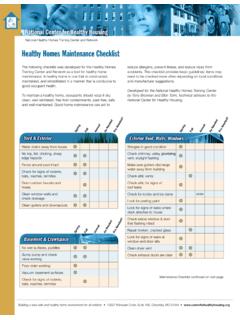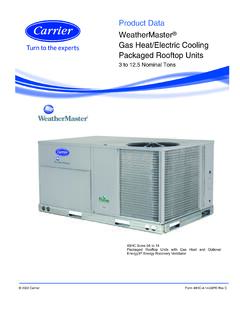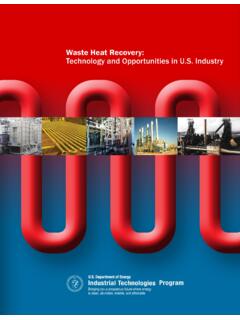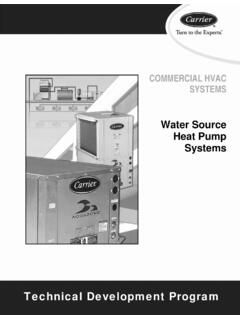Transcription of MATERIAL SAFETY DATA SHEET Glyphosate 5 - Lake Restoration
1 1 MATERIAL SAFETY DATA SHEET Glyphosate Alligare, LLC Emergency Phone: Chemtrec 800-424-9300 Effective Date: April 6, 2007 EPA Reg. No. 81927-8 1. PRODUCT AND COMPANY IDENTIFICATION PRODUCT NAME: Glyphosate Active Ingredient: Glyphosate (in the form of its isopropylamine salt) Chemical Name: N-(phosphonomethyl)glycine Chemical Formula: C6H17N2O5P COMPANY IDENTIFICATION: Alligare, LLC 13 North 8th Street Opelika, KS 36801 2. COMPOSITION / INFORMATION ON INGREDIENTS Glyphosate Isopropylamine Salt CAS No. 38641-94-0 3. HAZARD IDENTIFICATION EMERGENCY OVERVIEW Harmful if inhaled. Avoid breathing vapor or spray mist. Avoid contact with eyes, skin or clothing. Remove and wash contaminated clothing before reuse.
2 POTENTIAL HEALTH HAZARDS: EYE Slight eye irritant. Undiluted product may cause pain, redness and tearing. SKIN - May be slightly irritating to the skin. INGESTION - No more than slightly toxic and no significant adverse health effects are expected to develop if a small amount (less than a mouthful) is swallowed. POTENTIAL PHYSICAL HAZARDS: May react with metals such as galvanized or mild steel to produce hydrogen gas, potentially forming a highly combustible gas mixture. 4. FIRST AID IF INHALED: Move person to fresh air. If person is not breathing, call 911 or an ambulance, then give artificial respiration (preferably by mouth-to-mouth) if possible. IF IN EYES: Hold eye open and rinse slowly and gently with water for 15-20 minutes.
3 Remove contact lenses, if present, after the first 5 minutes, then continue rinsing eye. Call a poison control center or doctor for treatment advice. 2 IF SWALLOWED: Call a poison control center or doctor immediately for treatment advice. Have person sip a glass of water if able to swallow. Do not induce vomiting unless told to do so by a poison control center or a doctor. IF ON SKIN OR CLOTHING: Take off contaminated clothing. Rinse skin immediately with plenty of water for 15-20 minutes. Call a poison control center or doctor for treatment advice. Have the product container or label with you when calling a poison control center or doctor, or going for treatment. You may also contact 1-800-424-9300 for emergency medical treatment 5.
4 FIRE-FIGHTING MEASURES Flash point: Not applicable Flammable Limits (LFL-UFL): N/A Means of Extinction: Use water spray, foam or dry chemical. Fire Fighting Instructions: Evacuate area and fight fire from a safe distance. Approach from upwind to avoid hazardous vapors and decomposition products. A foam or dry chemical fire extinguishing system is preferred to prevent environmental damage from excessive water run off. If water is used, avoid heavy hose streams. If possible, dike and collect water used to fight fire to prevent/minimize run off. Firefighting Equipment: Self-contained breathing apparatus with full face piece. Wear full firefighting turn-out gear (Bunker gear). Hazardous Combustion Products: Carbon monoxide, nitrogen oxides, phosphorous oxides.
5 6. ACCIDENTAL RELEASE MEASURES Clean up spills immediately. Isolate and post spill area. Wear protective clothing and personal protective equipment as prescribed in Section 8 Exposure Controls/Personal Protection . Keep unprotected persons and animals out of area. SMALL SPILL: Absorb spill with inert MATERIAL such as dry sand, vermiculite or fuller s earth, then place in a chemical waste container. LARGE SPILL: Dike large spills using absorbent or impervious MATERIAL such as clay or sand. Recover and contain as much free liquid as possible for reuse. Allow absorbed MATERIAL to solidify and scrape up for disposal. After removal, scrub the area with detergent and water and neutralize with dilute alkaline solutions of soda ash or lime.
6 7. HANDLING AND STORAGE Keep out of reach of children and animals. Do not contaminate other pesticides, fertilizers, water, food or feed by storage or disposal. Wash thoroughly after handling this product. Store above 10 F (-12 C) to keep product from crystallizing. 8. EXPOSURE CONTROLS / PERSONAL PROTECTION Engineering Controls: To keep exposure to airborne contaminants below exposure limits, proper ventilation is required when handling or using this product. Local mechanical exhaust ventilation may be required. Facilities storing or using this MATERIAL should be equipped with an eyewash facility and a SAFETY shower. Eyewear: SAFETY goggles are recommended when mixing, loading or cleaning equipment.
7 3 Clothing: Wear long-sleeved shirt and long pants and shoes plus socks. Gloves: Waterproof gloves are recommended when mixing, loading or cleaning equipment. NOTE: Remove clothing immediately if pesticide gets inside. Then wash thoroughly and put on clean clothing. 9. PHYSICAL AND CHEMICAL PROPERTIES Appearance: Pale yellow, clear viscous liquid Odor: Slight amine odor pH: Flashpoint (PMA-4): N/A Specific Gravity: g/ml Solubility in Water: Soluble 10. STABILITY AND REACTIVITY CONDITIONS TO AVOID: Avoid temperatures above 115 F (46 C) and below 25 F (-5 C) CHEMICAL STABILITY: Product is normally stable. However, product may decompose if heated. HAZARDOUS DECOMPOSITION PRODUCTS: heat and fire may result in thermal decomposition and the release of nitrogen oxides, phosphorous oxides and carbon monoxide.
8 INCOMPATIBILITY WITH OTHER MATERIALS: Strong oxidizers and bases, unlined and galvanized steel. POLYMERIZATION: Will not occur. 11. TOXICOLOGICAL INFORMATION ACUTE ORAL TOXICITY Oral LD50 (rat): > 5,000 mg/kg ACUTE DERMAL TOXICITY Dermal LD50 (rat, male): > 5,000 mg/kg ACUTE INHALATION TOXICITY Inhalation LC50 (rat): > mg/L EYE IRRITANT None to Slight SKIN IRRITATION None to Slight SENSITIZATION Guinea pig Non-Sensitizer MEDICAL CONDITIONS AGGRAVATED BY EXPOSURE: None known. CARCINOGENICITY: ACGIH: Not listed IARC: Not listed NTP: Not listed OSHA: Not listed MUTAGENIC DATA: No evidence of mutagenic effects during in vivo and in vitro assays. ADDITIONAL DATA: None.
9 4 12. ECOLOGICAL INFORMATION ENVIRONMENTAL DATA: Do not contaminate water when cleaning equipment or disposing of equipment washwaters. Treatment of aquatic weeds can result in oxygen depletion due to decomposition of dead plants. This oxygen loss can cause fish suffocation. MAMMILIAN TOXICITY This product is considered to be relatively nontoxic to dogs and other domestic animals; however, ingestion of this product or large amounts of freshly sprayed vegetation may result in temporary gastrointestinal irritation (vomiting, diarrhea, colic, etc.). If such symptoms are observed, provide the animal with plenty of fluids to prevent dehydration. Call a veterinarian if symptoms persist for more than 24 hours.
10 FISH TOXICITY 96 hour LC50, Rainbow trout g/L (technical) 96 hour LC50, Bluegill g/L (technical) AVIAN TOXICITY Oral LD50, Bobwhite quail > 3,800 mg/kg (technical) BEE TOXICITY: Non-toxic. 13. DISPOSAL CONSIDERATIONS PESTICIDE DISPOSAL: Wastes resulting from the use of this product that cannot be used or chemically reprocessed should be disposed of in a landfill approved for pesticide disposal or in accordance with applicable Federal, state or local procedures. Emptied container retains vapor and product residue. Observe all labeled safeguards until container is cleaned, reconditioned, or destroyed. CONTAINER DISPOSAL: For plastic containers, triple rinse (or equivalent). Then offer for recycling or reconditioning, or puncture and dispose of in a sanitary landfill, or incineration, or, if allowed by state and local authorities, by burning.




